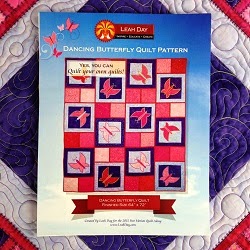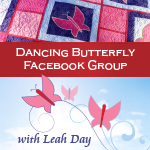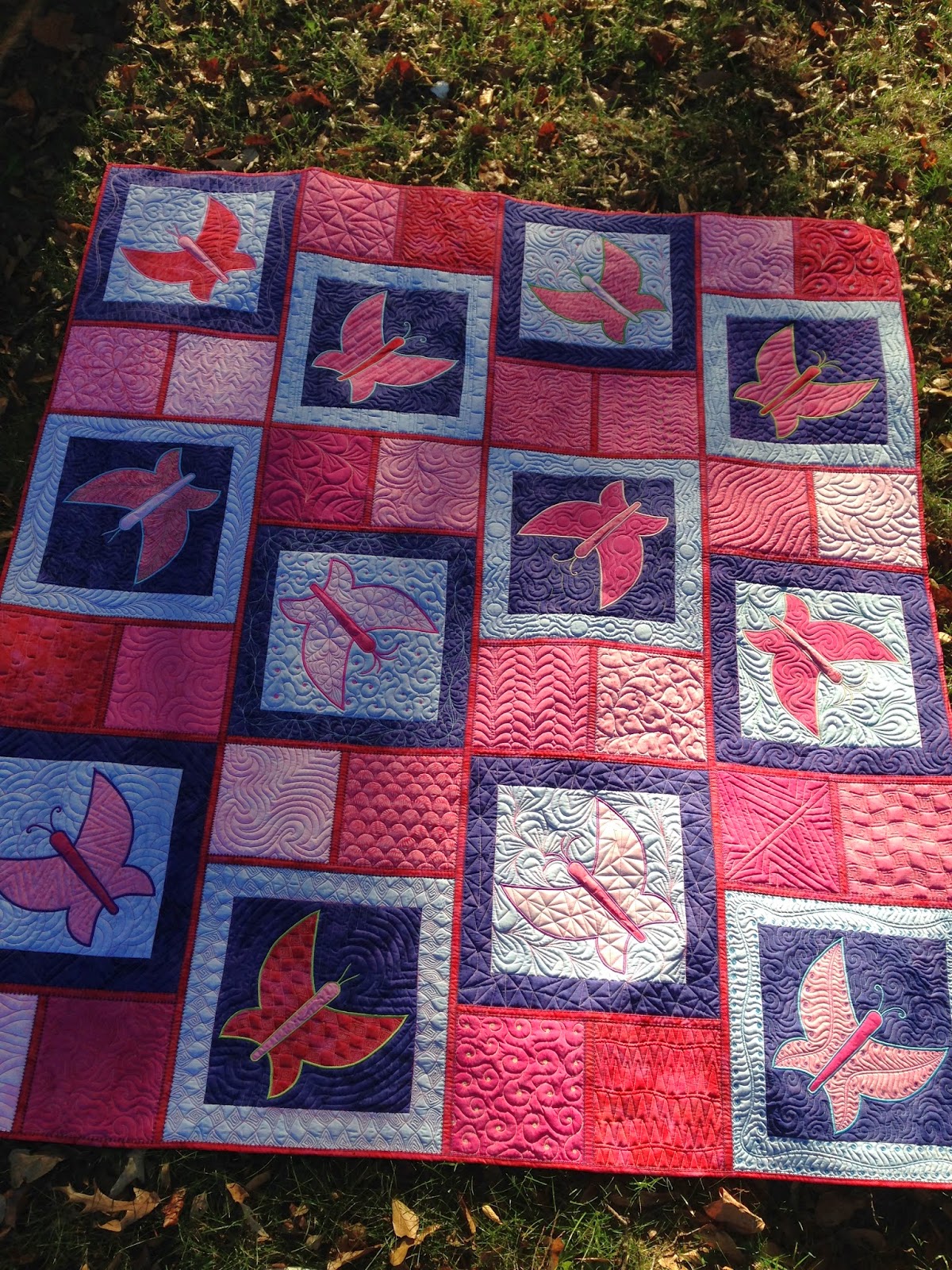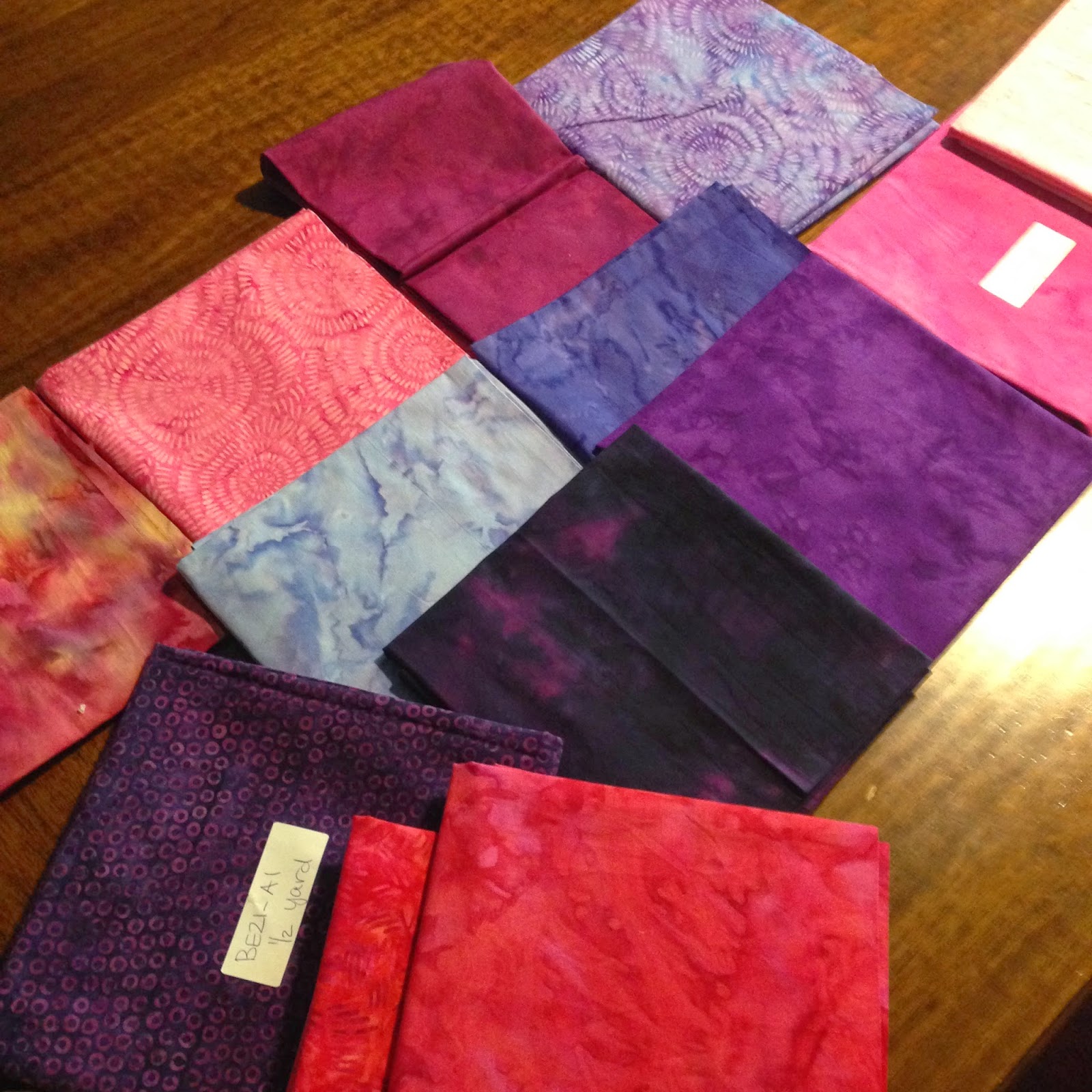Picking Colors for Dancing Butterfly
When it comes to fabric color we definitely have a lot to choose from! Selecting fabrics for a project is lots of fun and often my favorite part of the process. However, I’ve heard from many quilters in the Dancing Butterfly Facebook Group and via email that picking colors can be stressful and confusing.
For the Dancing Butterfly Quilt, you have a lot of options for color choice, and in this post I’m going to explain the many possibilities and hopefully open up some new ideas for you as well.
Don’t forget to pick up your copy of the Dancing Butterfly Quilt Pattern while they are on sale this weekend!
When designing my Dancing Butterfly quilt, I choose bright, cheerful colors, and yes, generally steered towards pink, purple, and red. Yes, I let myself go super girly with this quilt:
There are 8 colors used in this quilt. Colors A and B form the butterfly background blocks, and colors C through H form the butterfly shapes and design blocks. The yardage needed for each color is as follows:
- 1 3/4 yards Fabric A for butterfly blocks – Island Batik Blurple
- 1 3/4 yards Fabric B for butterfly blocks – Island Batik Periwinkle
- 2/3 yard Fabric C for design blocks – Island Batik Raspberry
- 2/3 yard Fabric D for design blocks – Island Batik BE26B1
- 2/3 yard Fabric E for design blocks – Island Batik Carnation
- 2/3 yard Fabric F for design blocks – Island Batik BE22B1
- 2/3 yard Fabric G for design blocks – Island Batik Punch
- 2/3 yard Fabric H for design blocks – Island Batik Bubblegum
I used beautiful Island Batik basics and blenders for my quilt, but I could have just as easily used solids or printed fabrics or even a blend of batiks, solids, and prints. There are no rules against using all these different fabrics together. So long as your fabric is 100% cotton, it will work great for this quilt!
Since the connecting binding on the quilt surface is also visible, I used Island Batik Punch as the connecting color. It created bands of hot pink between the blocks that looked great in the finished quilt. Another idea that would have worked just as good would have been to use a solid color like black or white to connect the blocks together.
Since pink isn’t for everyone, I created another Island Batik colorway, this time using every color of the rainbow:
For this colorway you will need:
- 1 3/4 yards Fabric A for butterfly blocks – Island Batik Copper
- 1 3/4 yards Fabric B for butterfly blocks – Island Batik Butter
- 2/3 yard Fabric C for design blocks – Island Batik Candy
- 2/3 yard Fabric D for design blocks – Island Batik Nasturtium
- 2/3 yard Fabric E for design blocks – Island Batik Daffodill
- 2/3 yard Fabric F for design blocks – Island Batik Apple
- 2/3 yard Fabric G for design blocks – Island Batik Waterfall
- 2/3 yard Fabric H for design blocks – Island Batik Wisteria
What about a connecting binding color? For this quilt I’d probably pick either Fabric A or Fabric B for the binding. I like the idea of Copper as the binding color because it will not show dirt or wear like the lighter Butter color, but that’s just me!
But what if you don’t like all the colors of the rainbow? Here’s a colorway using mostly green, purple, and blue Hoffman Batiks:
Here’s the fabric list for this colorway:
- 1 3/4 yards Fabric A for butterfly blocks – Hoffman Batik Navy
- 1 3/4 yards Fabric B for butterfly blocks – Hoffman Batik Agate
- 2/3 yard Fabric C for design blocks – Hoffman Batik Blue jay
- 2/3 yard Fabric D for design blocks – Hoffman Batik Jade
- 2/3 yard Fabric E for design blocks – Hoffman Batik Cornflower
- 2/3 yard Fabric F for design blocks – Hoffman Batik Lavender
- 2/3 yard Fabric G for design blocks – Hoffman Batik Lagoon
- 2/3 yard Fabric H for design blocks – Hoffman Batik Cobalt
As for the connecting binding, I would probably use Agate for this quilt because I really like that dark purple color. My best advice for picking the connecting binding color is to select your favorite color from the 8 fabrics you’ve selected.
The binding doesn’t take up much space on the surface, but it will add more of that color over the whole quilt. If you pick a green binding, it will make the quilt read more green, and blue binding will make it feel more blue. The best choice is to go with which fabric you like the best!
Finally I have one more colorway for you today. This quilt was created with the simplest options for the butterfly blocks: just white and black solid fabric.
The butterflies and design blocks are also simple – they were created using one precut pack of 10 inch squares!
This creates a very scrappy quilt with all different colors and fabrics, but it might be easier to pick if you already have a precut pack of 10 inch squares on hand.
Here’s the fabric list for this Dancing Butterfly version:
- 1 3/4 yards Fabric A for butterfly blocks – White solid
- 1 3/4 yards Fabric B for butterfly blocks – Black solid
- 1 precut pack of 10 inch squares
Hmm…what should we use to connect the blocks together? I probably wouldn’t use black or white fabric to bind this version of the quilt simply because it’s so colorful and scrappy.
Personally I would go through all the layer cake fabrics and select the fabric I liked the best. I would find yardage of that fabric, or something very similar to use as the connecting and outer binding.
 Would you like to see even more creative fabric choices? Click here to join in the fun on the Dancing Butterfly Facebook Group and see all the beautiful butterflies being created by quilters around the world!
Would you like to see even more creative fabric choices? Click here to join in the fun on the Dancing Butterfly Facebook Group and see all the beautiful butterflies being created by quilters around the world!
As you can see from all these examples and colorways – there’s so many beautiful choices when it comes to picking fabrics for this quilt! Be creative, have fun, and try not to get bogged down in too many choices. Your quilt is going to be beautiful no matter what color it is, and you’re definitely going to learn loads as you work block by block through this project.
Don’t forget to pick up your copy of the Dancing Butterfly Quilt Pattern while they are on sale this weekend!
Let’s go quilt,
Leah Day




Wow all those quilts look amazing. I need to start this one but I need to do sooo many other things first. I will get to it I promise. Meanwhile there are so many colourways. Ilke the black and white backgrounds.
I can't tell from looking at the fabric requirements how much fabric is needed for the actual butterflies and for the connecting binding. Fabric C through H is all listed as
" design block" so I am unclear how much is needed for these other elements. Thanks!
Hi Cindy – Fabrics C through H include both the design blocks and butterfly shapes. You cut 6 squares from each fabric, 4 area used for the design blocks and 2 are used for the butterflies. For connecting binding, you need 2 yards. You can find the complete list right here: http://www.leahday.com/shop/product/butterfly-printed/
This pattern looks wonderful but I'm new to quilting so I'm starting with the Building Blocks quilt first. I've been looking for something to push my limits and thanks to you I think I've found it. My husband says he hasn't seen me this excited in years. Thanks for all you do to inspire us.
In choosing my fabrics I seem to be leaning towards some prints but I'm wondering if you feel that solids would be better for us newbies in terms of seeing what we're doing as we fmq? Or does it not really make a difference as long as we use a contrasting thread we can see?